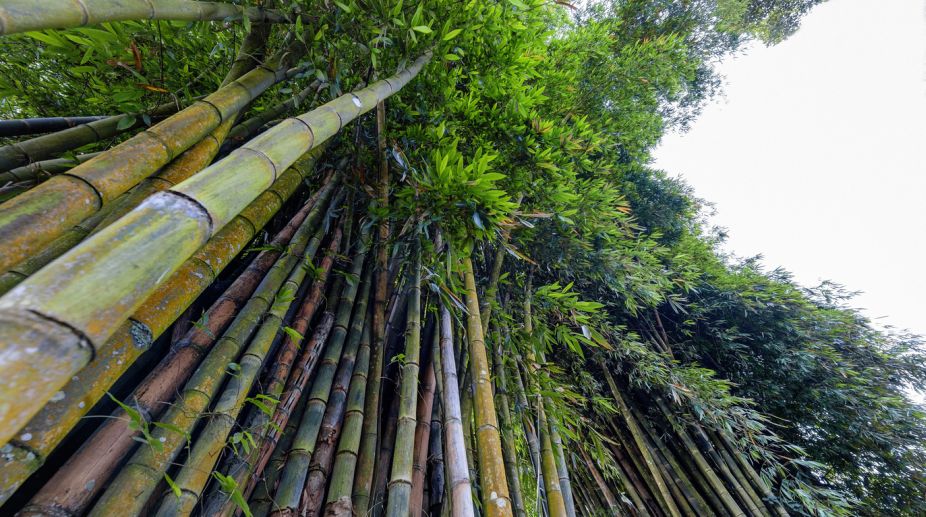Although one of the largest of Indian bamboos (a well-developed clump stands 100 ft high), the giant bamboo (Bambusa arundinacea) is also the most graceful. There are other bamboos, particularly some exotics, whose culms are more colourful and foliage more decorative, but none of them I think, has the strong, varied beauty of our giant bamboo.
Even in dry March, when comparatively bare, it is magnificent; in spite of the intricate tracery of its delicate, steelhard branchlets at the base of the clump, the bold culms rising high above them, and the glint on sunlight on the lanceolate, yellowing leaves, the entire clump has a mature, integrated beauty and autumnal richness in spring.
And when in thick left the stately, slim, feathery culms, and the cool, airy cascades of fresh green leaves from the younger shoots, are delightfully refreshing to the eye. Some of the loveliest spots in India that I know are pure stands of giant bamboo in the forests near running water.
Soon after the rains, fresh shoots come up from the underground stem to replace the old, lost culms, the thick, tender shoots have their nodes and tips sheathed in brown, shield-like spathes, and are turgid with sap and life; they grow almost visibly, gaining height rapidly each day, and then hardening into leafy culms.
A clump survives for 30 years or more in this manner, and then flowers seeds, and dies with dramatic suddenness. There are varying estimates of its vegetative span. Some say the giant bamboo flowers and dies every 30 years or so and others give it a longer vegetative span.
When one considers how deeply soil and climate must affect its life and death, and how difficult it is to get precise and reliable records of something that happens once in a lifetime of twice, this variation in estimates is hardly surprising.
This bamboo is given to gregarious flowering, all the clumps in several square miles bursting into flower simultaneously seeding in reckless profusion, and then dying en masse. Sporadic flowering of a few clumps may precede and succeed this dramatic mass death, but in 1959, and again in 1962 and 1963.
I observed large areas of giant bamboo (never less than a square mile) seeding in the same locality in Benne on the Nilgiris-Wynaad border. This may be explained as a sporadic phase, followed after a few years by a gregarious phase, quickly followed again by a sporadic phase of seeding, but such an explanation can have no basis in fact or in English.
When every clump in a large area, several hundred clumps in a continuous belt extending well over a square mile, seed and die extravagantly together, covering the ground with a thick carpet of seeds as far as they eye can see, the use of the word “sporadic” to indicate such seeding has no meaning whatever. And in 1959, 1962 and 1963, it was such a seeding that I observed at Benne.
They say that it is in years when the rains fail, when the drought kills the crop and famine threatens, that the grant bam











